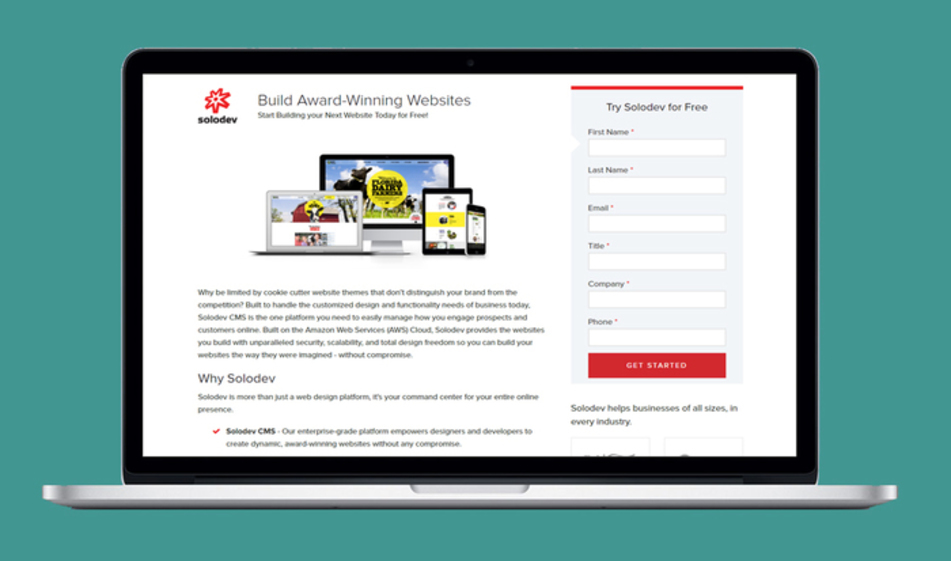A Go-To Guide for Understanding Bounce Rates
Bounce rates are some of the trendiest parts to a website's Google Analytics. But what do they actually detail, and are high bounce rates always a sign of a poor website?
Google Analytics can seem like a necessary evil, especially if you’re not good with numbers and have a deep-seeded fear of graphs. Those numbers get even more difficult to digest when the data tells you things about your website that you’d rather not be true.
Even for the most numerophobic person, Google analytics is easily readable. Visits, unique visitors, average visit duration – all these numbers make sense. They’re straightforward. However, one element of the reports can be especially confusing or entirely misleading. One of the most divisive aspects of a Google report is the bounce rate.
What is Bounce Rate?
Google defines it as the percentage of single pageview visits to a website. It’s basically the number of visits in which your person leaves a website from the landing page and don’t do anything else on your site. However, this is a simple explanation to something web marketers will say can be very important. Broader definitions include interactions (other events, transactions, etc.) that show engagement on a webpage.
What bounce rates are not
Bounce rates aren’t a strict measure of your content. They don’t determine the success or failure of your sites. Bounce rates don’t reflect the overall effectiveness of your website. They’re not the end-all-be-all analytic for mastering your website’s marketing strategy.
Normal bounce rates range between 30% to 60%. Bounce rates for lead generation are between 30% to 50% typically.
When High Bounce Rates Aren’t a Bad Thing
If you’re currently panicking because you’re over 60%, stop. There are several factors that can contribute to a high bounce rate, and not all of these are bad.
- You’re giving visitors exactly what they need.
- The traffic stems from a viral page you have.
- You’re a single page site like a blog, or a site where single page interactions are expected.
Low Rates Don’t Always Mean High Engagement
If your analytics show that no one is bouncing from your site, you’ve got some serious issues with the analytics code. No, unfortunately, it’s not because your website is perfect. Go back through and make sure everything is working on the backend to provide accurate figures.
There's a chance that your GA installation is just fine. Unusually good bounce rates range from 25% to 30% (assuming everything works correctly). If that's the case, then well done. You've got a well constructed, professional website that accutely meets your users' needs... Or it could be a sign that you don't have much dynamic content on the website. But, ultimately, you have to be okay with the number.
How to Reduce Bounce Rates
If your website doesn’t fit any of the scenarios above, then it might be time to face the realities of high bounce rates head-on. However, all is not lost! Like we mentioned before, high bounce rates aren’t a death sentence and they can easily be combatted by applying a few tips.
Make sure your landing pages have a clear Call to Action (CTA).
If your landing pages lack a Call to Action (CTA), then your visitors will struggle to stay on the page. Give headings, subheadings, and copy that encourage your visitors to complete your CTA.
Target keywords to those relevant to your website – not trends.
Keywords that have nothing to do with your website’s content/purpose will frustrate visitors. Even inappropriately linked pages can ruin a potential conversion. If an ad promises a free software trial but links to the homepage of a website rather than a landing page for the download, brace for high bounce rates.
Reconfigure your content.
Engaging designs are fantastic, but copy riddled with errors quickly distracts and drives away visitors. A high bounce rate could signal lackluster content. Ideal copy should be concise, clean, and simply digestible. Bonus points if you make it visually appealing with clear headlines and relevant subheadings!
Check your loading speed.
When it comes to the internet, “slow and steady” does not win the race. Page abandonment increases with the ticking of each second. At a two-second delay, up to 20% of visitors have left a slow site. At 10 seconds, that percentage is closer to 50%. Make sure hiccups with your loading speed aren't costing you visitors and leading to high bounce rates.
Give visitors one more avenue to explore.
Take a page out of the Boyz II Men handbook on this one. Once your visitors “come to the end of the road,” give them another element so they “can’t let you go.” Tag content with recommended posts, similar products, or another element that’s eye catching or preemptively satisfies a need.
Even after the CTA has been fulfilled, there’s still room for more engagement with your website.
Hopefully now the words "bounce rate" don't strike as much fear into your heart. They can be an incredibly effective tool to gauging certain key elements of your website. For more tips on how to improve your website's reach, check out the Solodev blog.







